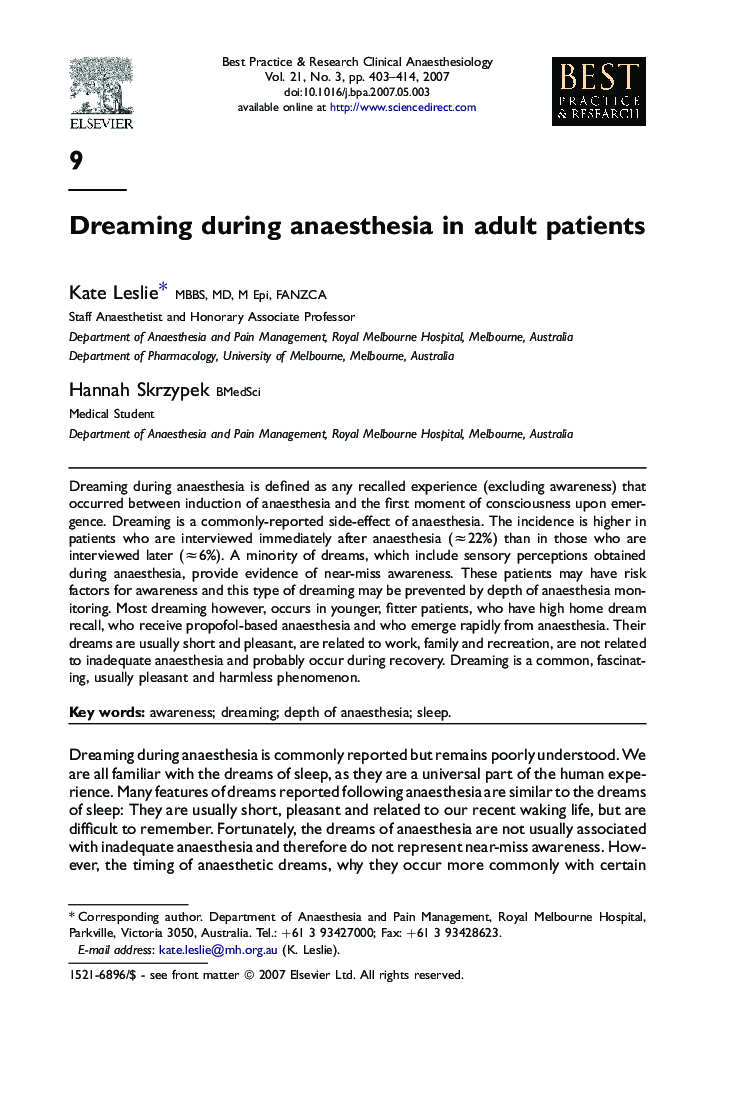| Article ID | Journal | Published Year | Pages | File Type |
|---|---|---|---|---|
| 2748874 | Best Practice & Research Clinical Anaesthesiology | 2007 | 12 Pages |
Dreaming during anaesthesia is defined as any recalled experience (excluding awareness) that occurred between induction of anaesthesia and the first moment of consciousness upon emergence. Dreaming is a commonly-reported side-effect of anaesthesia. The incidence is higher in patients who are interviewed immediately after anaesthesia (≈22%) than in those who are interviewed later (≈6%). A minority of dreams, which include sensory perceptions obtained during anaesthesia, provide evidence of near-miss awareness. These patients may have risk factors for awareness and this type of dreaming may be prevented by depth of anaesthesia monitoring. Most dreaming however, occurs in younger, fitter patients, who have high home dream recall, who receive propofol-based anaesthesia and who emerge rapidly from anaesthesia. Their dreams are usually short and pleasant, are related to work, family and recreation, are not related to inadequate anaesthesia and probably occur during recovery. Dreaming is a common, fascinating, usually pleasant and harmless phenomenon.
